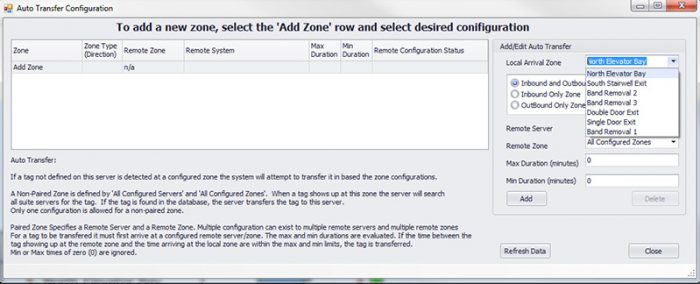Introducing Automatic Tag Transfers: Flexibility and Enhanced Security
Posted by Chris Konicek on July 7, 2017 10:18 am
It’s your job to know where your patients are and that they are safe, secure, and well-cared for. Maybe you run a senior-living facility where “at-risk” residents desire to move freely but need to be protected. Or you oversee a pediatric floor where children may get up and wander freely. Or maybe you work on an obstetric floor where infant abduction and baby-mother mismatch are still potential threats. No matter who your patient is—senior, child, or infant—we know you want them to be in the best of hands when they are in your care. That’s why we strive to provide you with the leading RFID-enabled products to keep any patient safe.
Our team has been hard at work further developing our product to provide you with all the features that you want and need to make your job easier while enhancing patient security. We’re excited to introduce our newest feature: automatic tag transfer.

No more manual tag transfers
We both know all too well that the process before was a bit too manual: you had to physically select a tag from your database to initiate a tag (patient) transfer, and then accept the transfer at the destination location’s computer. Not anymore! Now you can seamlessly move from one location to another without having to find a computer before you leave nor when you get to where you are going. All we need to do is configure the transfer points for your systems and then the rest is done for you – your transfer points will initiate and complete a tag (patient) transfer when it is read at a specific location.
- Spend more time caring for patients, and less time managing transfers
- Let patients move freely within protected zones but rest assured that patients cannot move out of these zones without authorization
- Automate the transfer of patients between areas of the hospital for seamless care and uninterrupted security
Always know where patients are
We know that facilities that specialize in senior or pediatric care prefer to let their patients or residents experience a safe, positive, and open environment rather that feel restricted or confined. Our new automatic tag transfer feature, combined with our location capabilities, allows patients to roam while your staff can continuously monitor their whereabouts.
The same safety and peace-of-mind is also desired on all obstetric floors. While we don’t want the same roaming freedom for infants, we do want nurses to have more flexibility when transporting babies. With the new automatic tag transfer feature, your staff will have better mobility within protected zones, the most accurate newborn location information, and 24/7 abduction protection.
- Be notified if a breach, tampering, or entry into an “unprotected zone” occurs
- Ensure safety and real-time notifications of patient’s locations
- One tag and one system throughout your facility means less system management and more focus on care
Give your patients more freedom and allow nurses more flexibility when transporting patients—all while keeping everyone safe and comfortable.
To learn more about how your facilities could be better protected by software-enhanced Cuddles Infant Protection, Kidz Pediatric Elopement, or ResidentGuard Wander Management, contact us today. As an industry leader, we are committed to high quality, cost-effective, health care related security systems backed by the industry’s most comprehensive customer support program.
SUBSCRIBE TO OUR NEWSLETTER!
RECENT POSTS
- The Future of Baby Footprinting
- Addressing the Rise of Dementia with ResidentGuard Wander Management Solutions
- The Evolution of Infant Protection in Healthcare Technology
- Safeguarding Patient Privacy with Role-Based Access Control
- Essential Features of an Access Control System
- Groundbreaking Blood Test for Alzheimer’s: A Game Changer for Early Detection and Routine Testing
- Early Signs of Dementia Wandering: How to Identify and Manage This Behavior
- Understanding Role-Based Access Control in Physical Security
- How Hospitals Prevent Infant Switching
- Top 10 Security Challenges Facing Hospitals and How to Solve Them
POSTS BY TOPIC
